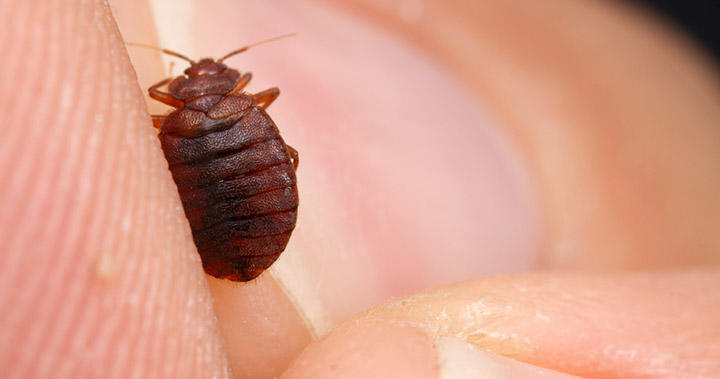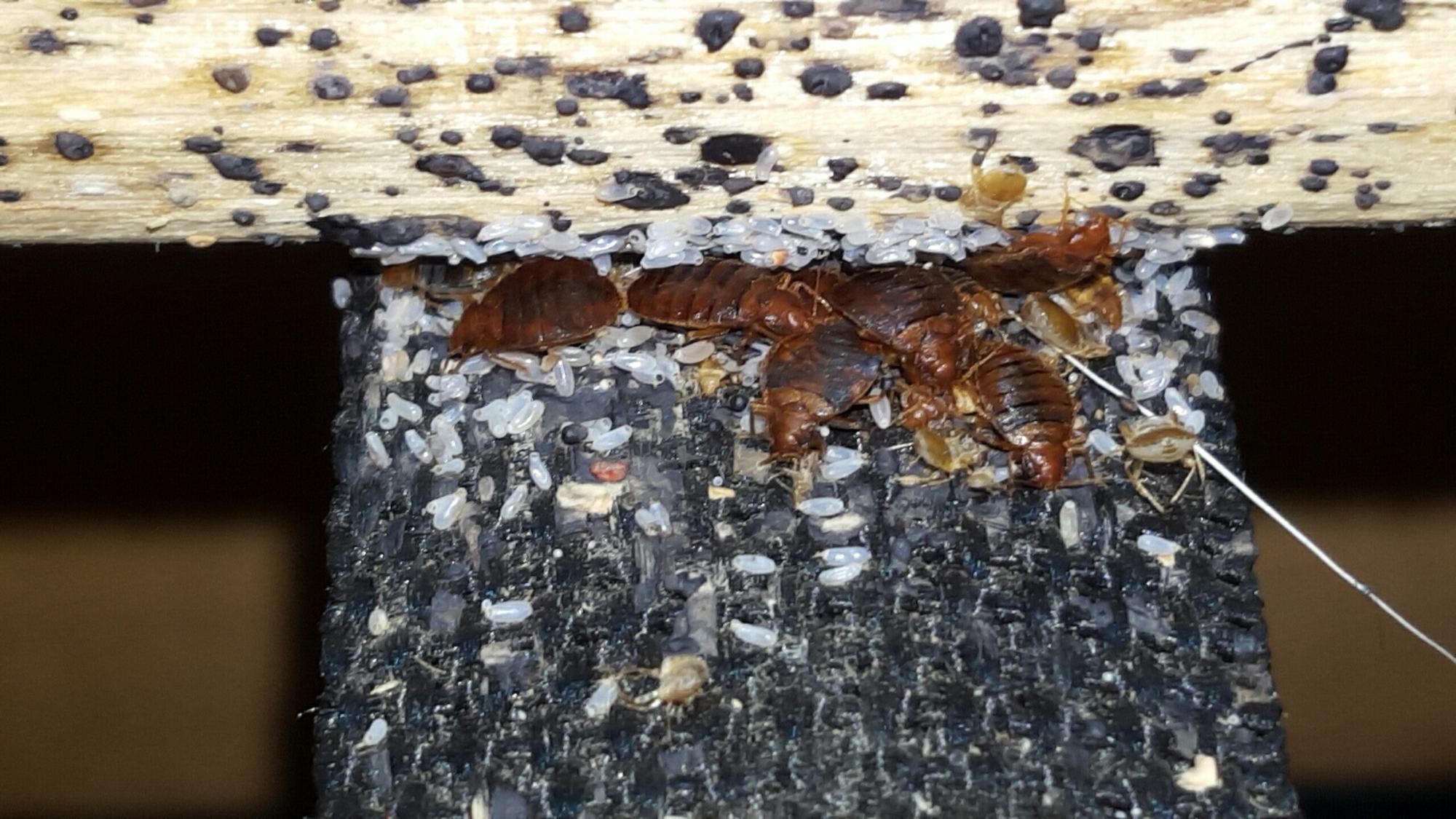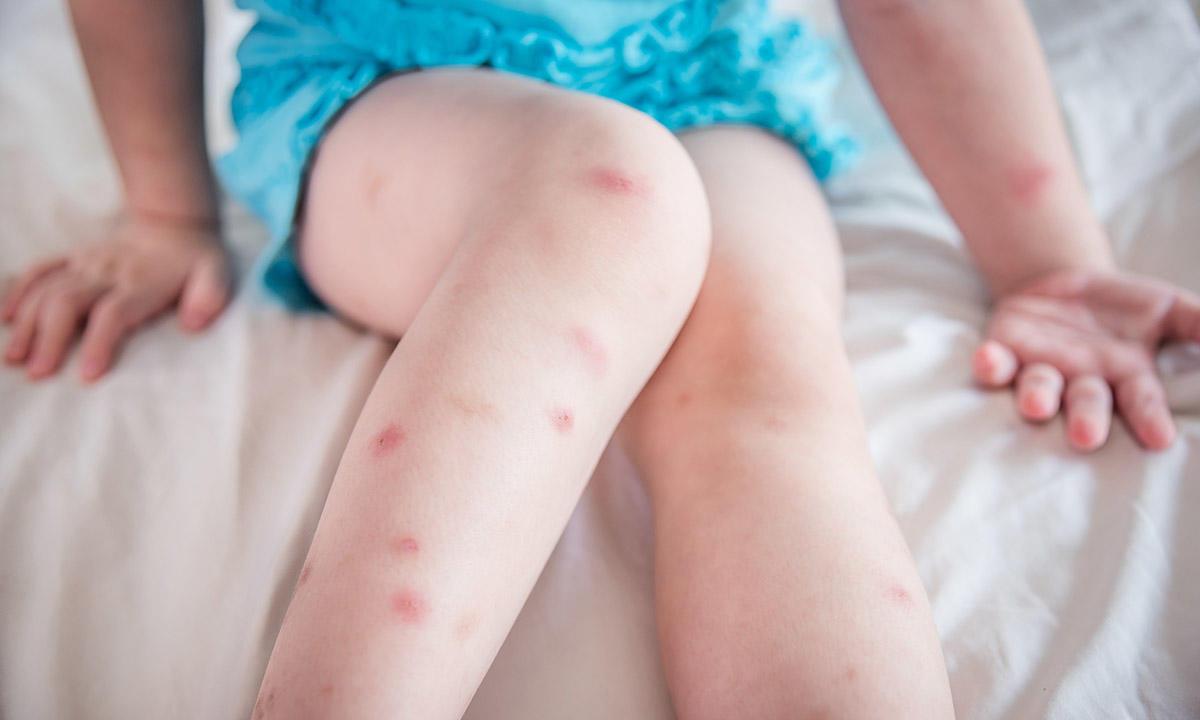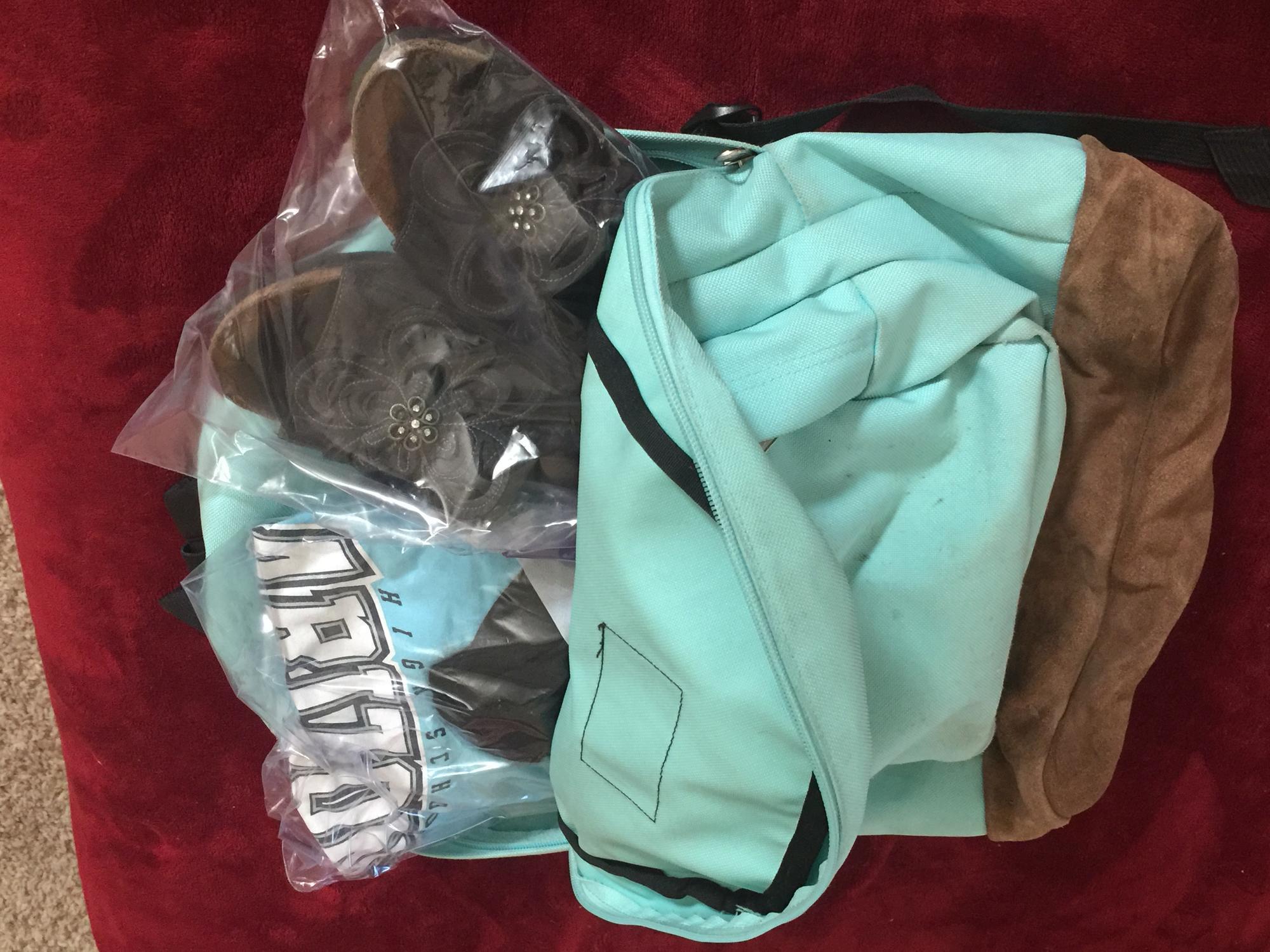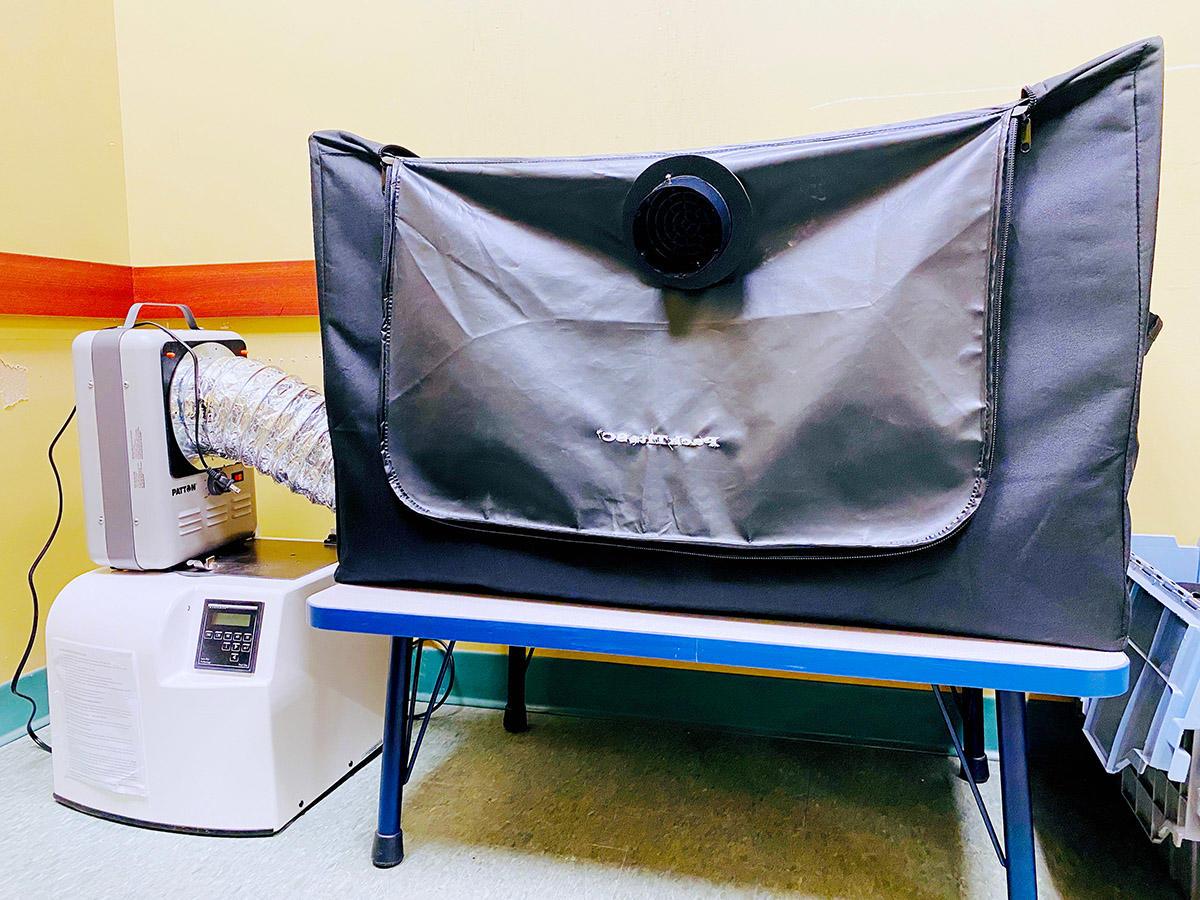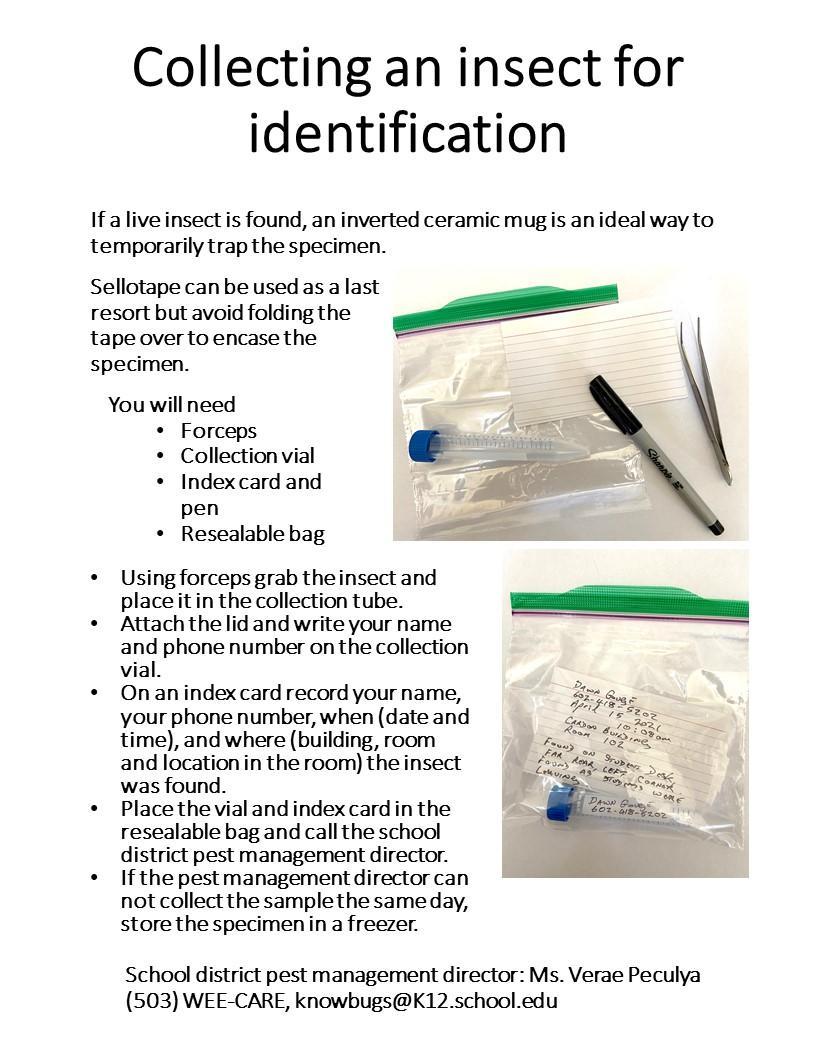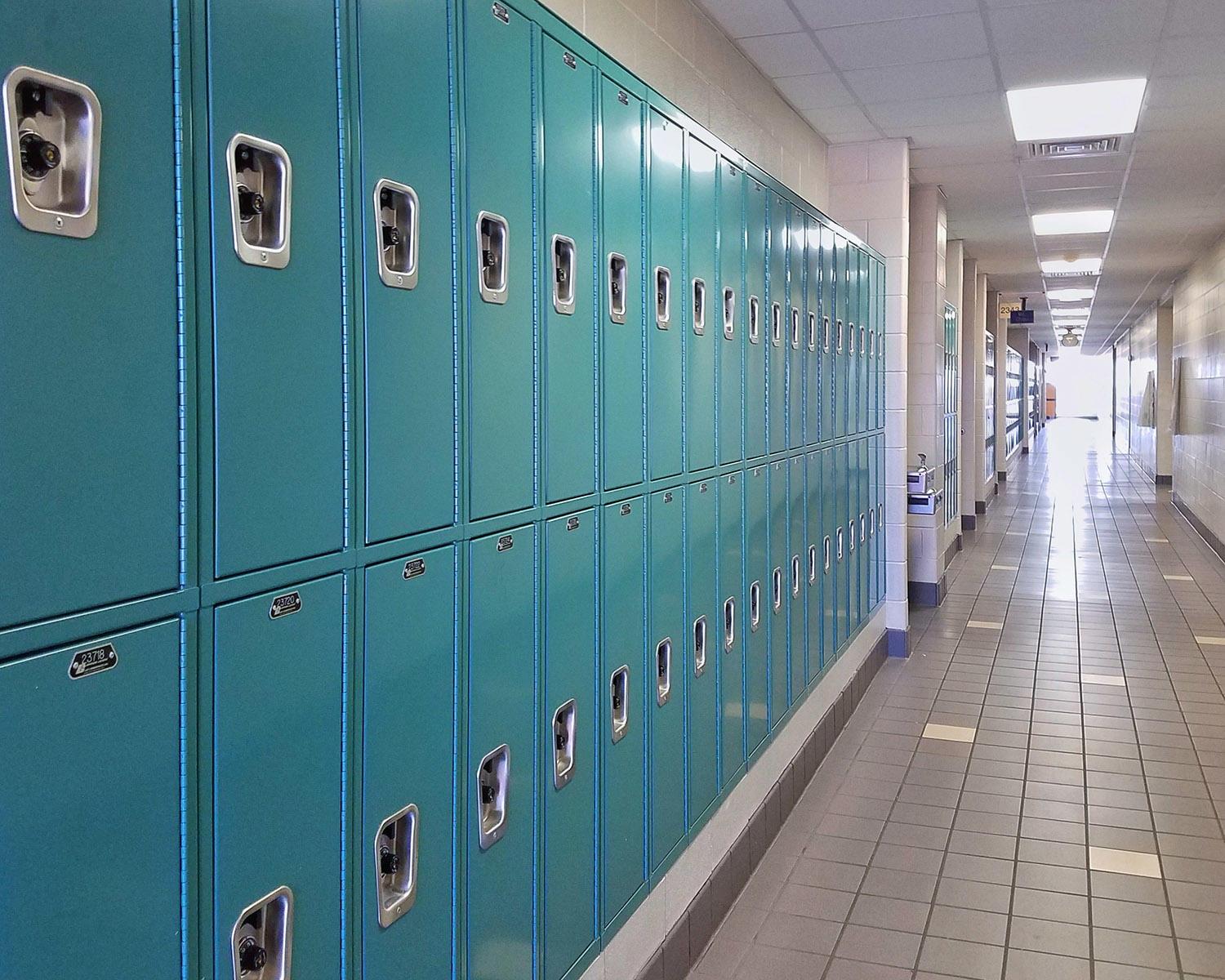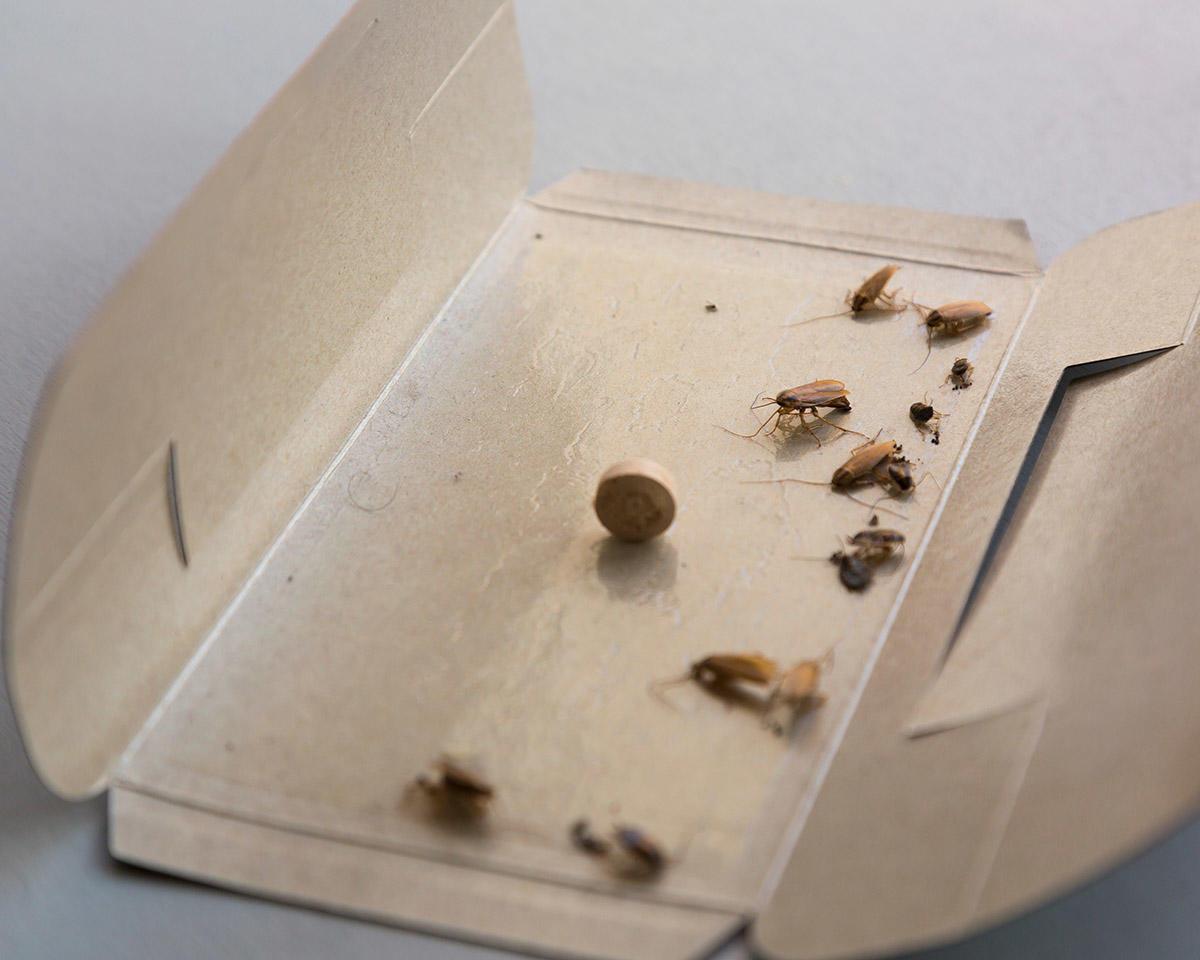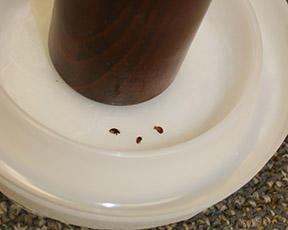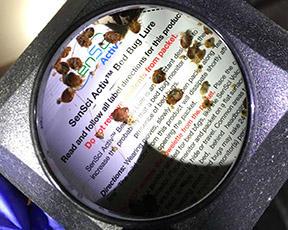The common bed bug, Cimex lectularius, is occasionally encountered in school buildings and other public places. Most bed bug infestations occur in homes or places where people sleep or rest. However, bed bugs can be dispersed during normal, everyday activities. Bed bugs found in schools are usually single bugs that have stowed away on articles being returned to school. Or, they may have dropped off a person who lives in an infested space.
Finding bed bugs in school buildings is a common occurrence and something that school facility managers should anticipate.
Important facts about bed bugs
Bed bug infestations can happen in any living space, and they can take several months to completely eradicate.
There is never a need to panic or evacuate a classroom, building or school bus when bed bugs are found.
No student or member of the school staff should be excluded from school because of a bed bug infestation in their living environment.
Respond to sightings by identifying the insect, deep-cleaning the facility and conducting ongoing monitoring of school buildings and buses.
This publication will cover:
- The basic biology of the common bed bug.
- Common health impacts on residents living with infestations.
- How to reduce bed bug introductions.
- How to increase awareness and knowledge within the school community.
- How to respond if bed bugs are found.
- Bed bug policy guidance.
- Identifying areas of a school vulnerable to bed bugs.
- How to inspect and monitor for bed bugs.
- Remediation actions.
- Helpful prevention guidance for parents and guardians.
- Useful resources.
Bed bug infestations are far more common in homes than schools. Aggregations of adults, immature bed bugs and eggs are more likely to show up in homes. You are more likely to find individual bed bugs in schools.
Bed bugs are nocturnal, blood-feeding insects which feed on humans and occasionally on other animals. They have mouthparts that pierce the host’s skin, inject saliva and take a blood meal through a straw-like stylet in three to 10 minutes. After withdrawing the stylet, they find a dark, protected spot (harborage) such as a crack or crevice in a wall or piece of furniture, in which to digest their meal. They begin excreting fecal droplets, which appear as dark-colored dots near harborage areas.
Adult bed bugs are 5–7 mm (3/16–1/4 inch) long, with oval-shaped bodies. Adult females lay oval, pearl-white eggs about the size of a pinhead (1 mm in length). Those in immature stages resemble adults but are smaller and paler in color.
Eggs and nymphs transported into schools are likely to rapidly die, but adults are hardier and the most frequently found life stage. They are usually found close to where they were inadvertently deposited, wandering in search of a protective crack or crevice to escape bright light.
Optimal living conditions for bed bugs include temperatures between 70° and 90°F, daily presence of a human host sleeping or resting for several hours, and the availability of protective folds, cracks or crevices. These cryptic bugs hide away to digest blood meals and meet other bed bugs. Clearly, human homes are a better place for bed bugs to thrive, and school environments are relatively hostile. Assuming human hosts are consistently available, bed bugs in homes will feed every three to seven days and have a high reproductive rate. Under ideal conditions, established populations of bed bugs can double every 13 days.
Due to the cryptic nature of bed bugs, it often takes two to five months for home occupants to become aware of their presence. Frequently this is because someone in the household develops itchy bite reactions. Residents will seek out medical care or pest management advice if they find bed bugs.
The protein components in bed bug saliva can cause a wide variety of skin reactions. A significant proportion of people have no discernable skin reaction. Case reports and resident surveys document varying levels of reaction. Additionally, an individual’s sensitivity to bed bug saliva changes over time and is affected by many factors. Overall, about 70% of people report bite reactions after prolonged exposure.
People experiencing a reaction to bed bug bites commonly report reddening of the skin, swelling and itching. Some cutaneous reactions require medical care, and secondary infections can result from excessive scratching. Reactions to bed bug bites appear the same as or very similar to bites caused by other blood-feeding insects such as mosquitoes.
A skin reaction alone does not confirm a bed bug infestation. Other blood-feeding insects cause comparable skin reactions. Additionally, similar reactions can be caused by allergic responses to medications, chickenpox, psoriasis, eczema, skin-picking (excoriation disorder), sun sensitivity or exposure to poison ivy, among other things.
Clean the bite site to prevent secondary infections. Reduce itching with cool compresses, oral antihistamines or topical corticosteroids as allowed.
Unlike some mosquito and tick species, bed bugs have not been found to transmit disease-causing organisms under normal living conditions.
Living with bed bugs can cause significant negative impacts on physical and mental health. Insomnia is commonly reported. This is partly due to itching, but also related to the anxiety and stress of living in infested homes. Bed bugs generate allergens that accumulate in indoor air. This triggers allergy and allergic asthma symptoms in sensitive individuals. Anemia has been associated with severe bed bug infestations but is extremely rare.
Related to the anxiety associated with living with bed bugs is the overuse and misuse of insecticides and other chemicals. Residents have resorted to dangerous practices as they attempt to control bed bugs in their home. The use of pesticides and flammable chemicals has resulted in hazardous indoor contamination, house fires, explosions, illness and tragic loss of life.
Responding to sightings and preventing infestations
As more people find bed bugs in their homes, the more we find bed bugs in schools. The most common way bed bugs are introduced is when they drop off a student, staff member or teacher’s body or belongings. But they can also come from volunteers, contractors, workers who deliver goods or from groups who use parts of the school after hours. It is important to establish a school bed bug policy and response plan that considers all school users.
School bed bug policy and response plan
Preventing bed bug introductions
If a student reports a home bed bug infestation or has repeated bed bug challenges, arrange for the student to change clothes and backpacks at the beginning and the end of each school day. Ask students to bring freshly laundered clothing in clean, sealable plastic bags. Provide plastic bags or totes in which to store their belongings during the day. Often, students can use the school health office or a designated changing area. In extreme cases, provide students with a backpack and shoes for in-school use only. If there is a clothes dryer on site, dry student clothing for 30 minutes on a medium or high heat setting to kill any hitchhiking bed bugs.
When bedding and clothing is brought in for pre-K, kindergarten students or infants attending high school child care centers, store the items separated in plastic totes labeled with their name. This is good practice for all children, not just those with bed bugs at home. Infested items can be laundered and thoroughly dried in a clothes dryer or placed in a clothes dryer on medium to high heat for 30 minutes.
Have knowledgeable staff or professional pest managers monitor lost-and-found, upholstered furniture in break rooms and teachers’ lounges and dormitory facilities (if present).
Establish procedures for managing commonly checked-out items that may harbor bed bugs when returned to school. Computers and tablets can be inspected, vacuumed or wiped with a dry microfiber cloth. Books, theater props, sewing projects, clothing and heat-tolerant artwork can be treated using portable heat treatment chambers. Items must reach a temperature of 50ºC (122ºF) for at least four hours to kill all stages of bed bugs. Most heat chambers take several hours to sufficiently raise the interior temperature of the materials being treated, so this is not a rapid process. But if used correctly, heat treatment chambers are extremely effective.
Limit the number of belongings coming in and out of school. If students bring pillows, blankets and stuffed animals into school, be prepared to vacuum and monitor the area.
Awareness and knowledge
Develop templates for communicating with individuals and families if bed bugs are found in school. Tell families to:
- Store school clothes, shoes, backpacks and coats in plastic trash bags or totes when at home.
- Keep folders, books and laptops off beds as much as possible. Kitchen tables or desks are better places for students to work if they are available.
- Place coats, clothes and sneakers in a clothes dryer on medium to high heat for 30 minutes to kill any bed bugs.
Provide educational documents (flyers, cards, brochures) for staff, teachers, parents and guardians. Include:
- Tips on how to avoid acquiring bed bugs.
- Basic information about bed bugs to facilitate early detection and action.
- A strongly worded caution against the dangers of overusing insecticides or other chemicals.
Provide annual training for teachers, school staff and students about bed bugs, so they:
- Can recognize a bed bug.
- Understand how bed bugs behave.
- Know what to do if they find one in school.
- Are familiar with school district policy.
Provide specific guidance for:
- School nurses interacting with students living with bed bugs at home.
- Staff inspecting and processing returned tablets and laptops.
- Librarians inspecting and shelving returned books.
- Custodians responsible for deep cleaning.
- Staff involved in monitoring for bed bugs.
Finding a bed bug
- Have instructions for teachers and staff describing how to collect an insect and who to contact to report the finding for identification. Knowlegable pest managers should investigate the area to confirm if a roving bed bug is a single introduction or could indicate an infestation close by. Precise details covering when (day and time) and where (building, room and where in the room) the insect was found are important. Place monitoring traps with lures and check them weekly. When bed bugs are found on an individual’s belongings it may be possible to determine someone is struggling with a bed bug infestation in their living environment. But in many instances it is impossible to identify the individual, and it is not appropriate to guess. Gently asking questions in a private and confidential manner may or may not be apropriate. But offering judgment-free help often allows people to feel less burdened and access advice on how to attend school without hitchhiking bed bugs.
- Establish who and how to contact custodians to ensure deep cleaning and ongoing monitoring of affected areas. Pesticide treatments are rarely necessary in school settings.
3. The Oregon Revised Statute (192.582 [formally ORS 570.880]) ensures that pest management professionals reporting to the Oregon Health Authority cannot disclose the location, occupier identity or detailed facts of a bed bug infestation. It is recommended that school districts informed of in-home infestations consider details as confidential.
Policy statements
Bed bug policy statements should include:
- School administrators understand that bed bugs can happen to anyone, and families or individuals may not be able to afford effective in-home control. Many low-income residents face the reality that living with bed bugs is the only option they have. Even if residents do contract with a professional pest management company, the eradication process often takes several months to complete.
- In particularly challenging instances, some school districts have been able to help families with bed bug mitigation costs. If this is something the school administration can consider, additional guidance regarding in-home control is provided in the resource section.
- Students will not be excluded from school, and staff are understanding and able to support access to clean clothes and backpacks to reduce the chances of bringing bed bugs into classrooms.
- Teachers and staff will not lose their jobs, and administrators can similarly facilitate ways to reduce the chances of bringing bed bugs into classrooms.
- School administrators appreciate teachers, staff and students reporting bed bug infestations at home and asking for assistance. Administrators understand that bed bugs cause stress and strain, and confidentiality is ensured. Individuals will be treated with respect and sensitivity. While bed bugs are not associated with poor hygiene, low standards of home sanitation or any socioeconomic status, many people feel a significant social stigma.
- Absolutely no pesticides can be brought from home for use in school and only pest management professionals or school staff with the proper pesticide applicator license can make pesticide applications on school property.
Areas vulnerable to bed bugs
Certain areas of schools are prone to roving bed bugs due to the relatively high amount of material items brought from homes. Areas to monitor carefully include: libraries; computer rooms; lost-and-found; theaters and band rooms; athletic changing areas; craft, sewing and tailoring classrooms; special education classrooms with assistive technology; any rooms with upholstered furniture such as break rooms and teachers’ lounges; and dormitory facilities if present.
When possible, provide students with enough room to hang or separate coats, bags, clothing and equipment. When coats and jackets hanging on hangers overlap, bed bugs can transfer between items. Implement forms of student storage that separate belongings. Bed bugs are highly unlikely to travel between belongings stored in student lockers.
If schools are involved in clothing collections for donation, or if they hold fundraising rummage sales on-site, plan for careful handling, management and distribution of items. Monitor storage areas used to stockpile donations for both bed bugs and German cockroaches while the areas are in use and for several weeks after. Use sticky monitoring traps plus lures for German cockroaches, and traps specifically designed for bed bugs (see “Inspecting and monitoring for bed bugs”).
While most areas within a school are hostile environments for bed bugs, on rare occasions infestations establish in areas where people rest frequently. Schools with dormitory facilities, child care centers, furniture on which a person regularly sits or sleeps, shared assistive technology and wheelchairs provide opportunities for bed bug populations to flourish. Monitor vulnerable locations and inspect equipment regularly.
Inspecting and monitoring for bed bugs
Bed bugs rarely get caught on sticky insect monitoring traps designed for cockroaches, spiders and other crawling arthropods. However, some commercially available traps are designed specifically to catch bed bugs. Interceptor traps are an ideal choice for areas vulnerable to bed bugs. Place them on the floor under furniture legs or next to stored donation boxes.
If roving bed bugs have been confirmed in a room, place monitoring traps that use lures in the location where the bed bug was found to determine if additional bugs are present. If there is no evidence of bed bugs after four weeks, remove the monitors.
A well-trained bed bug detection dog and handler team can help school facility managers locate bed bugs in buildings. The teams can cover a lot of area relatively quickly. These dogs can smell bed bugs at all life stages. Coupled with the skills of an experienced handler or pest management professional, a canine detection service can put minds at rest or sound an early warning. No insecticides of any kind should be used in conjunction with bed bug detection dogs.
Remediation
In most instances, deep cleaning and thorough vacuuming of areas is sufficient and pesticide use is unnecessary. However, if an infestation is detected, experienced pest management professionals with the proper pesticide applicator license may apply treatments to harborage locations. Experienced professionals use specialized products and application methods. They may apply amorphous silica dust or other low-risk options to treat voids, folds, cracks and crevices found to harbor bed bugs. They may recommend heat or steam treatments, or a combination of both. Please note, pyrethroid insecticide dusts should never be used in classrooms or any exposed areas where children or staff could be exposed.
Helpful prevention reminders for families
Most bed bug encounters in schools are individual bugs relocated from living spaces. They are in most instances doomed to die in the unsupportive environment of a classroom, even if they are not found. Except for boarding schools with active bed bug infestations, the chance of a student, teacher or staff member acquiring a bed bug while in a school building is low.
Bed bugs can arrive in a home, apartment or other living space because of their own natural dispersal (active ingress) or because of being transported into a residence on an article or person (passive introduction). Here are some common pathways.
Active ingress
Bed bugs move out of infested apartments into surrounding units by traveling through common walls, ceilings and floors between connected apartments or homes. They can also travel along and across internal corridors between neighboring apartments. Pest management professionals can treat interior wall voids with desiccant dust pesticides containing amorphous silica. Similarly, pest managers or residents can seal interior cracks and crevices between wall voids and interior rooms. For example, seal along baseboards, around escutcheon plates and electrical faceplates. This helps to reduce travel between apartments but will not eliminate all possible avenues of ingress and egress.
Passive introduction
Bed bugs hitchhike into homes on secondhand or rented furniture and secondhand clothing, toys, books and other items that have come from an infested home. Inspect rented furniture carefully, rejecting any items that show signs of a bed bug infestation. Avoid secondhand or discarded bed mattresses, box springs, bed frames or stuffed furniture as much as possible. Thoroughly clean other secondhand items before moving them into a home.
Be cautious when selecting secondhand clothing, linens and stuffed toys. Launder and completely dry items in a clothes dryer or dry clean them to kill the insects at all life stages. Bed bugs can survive the washing machine but not the clothes dryer. Dry items on an extra-long drying cycle. Carefully inspect, vacuum or wipe down items such as books, electronics and hard-surface games.
People staying in bed bug-infested hotels, college dormitories, boarding schools, shelters or other temporary housing can inadvertently bring bed bugs with them after traveling. Travelers may not notice they have been exposed to bed bugs, and the cryptic nature of the insects results in transfers via people’s belongings. After traveling, unpack suitcases and bags into the washing machine and wipe down toiletries and other nonwashable objects. Vacuum out bags and luggage and store them in a garage or external storage area outside the home if possible. Double wrap luggage in plastic bags if storing it indoors.
Children returning from summer camps, sleepovers or other environments can also bring bed bugs back to their living environment. Avoid moving anything that cannot be laundered or cleaned into your living space. If you take bedding to a child care facility, school, home, hotel or shelter, wash and dry all items thoroughly as soon as you return.
Bed bugs may arrive with overnight guests who have traveled from an infested location. This may not be their own home if they have traveled via hotels and motels. Ask visitors to follow the same precautions you would take yourself upon returning from a trip.
Laundering bedding and vacuuming a home regularly reduce the chances of an infestation. But even clean and well-maintained living spaces can harbor bed bug populations for months before the occupants discover the infestation. This may only come about when a person develops a sensitivity to the bites. Eliminating established bed bug infestations from living environments usually requires specialized knowledge and treatment specific to bed bugs. The process often involves an array of chemical and nonchemical products and equipment. Using experienced pest management professionals increases the chance of successfully controlling bed bugs.
Resources
U.S. Centers for Disease Control. Bed bugs, a problem worldwide, are resurging, causing property loss, expense, and inconvenience.
U.S. Environmental Protection Authority. Bed Bugs and Schools.
University of Arizona. Practical Methods of Controlling Bed Bugs at Home (Frequently asked questions and how to reduce the number of bites).
University of Florida. Bed Bugs and Book Bags: School Enrichment Curriculum for Grades 3–5.
University of Minnesota. Guidelines for Dealing with Bed Bugs in a School Setting.
